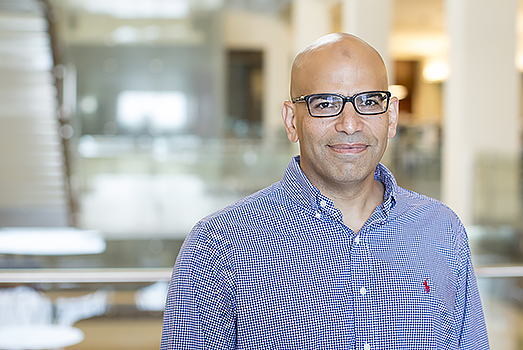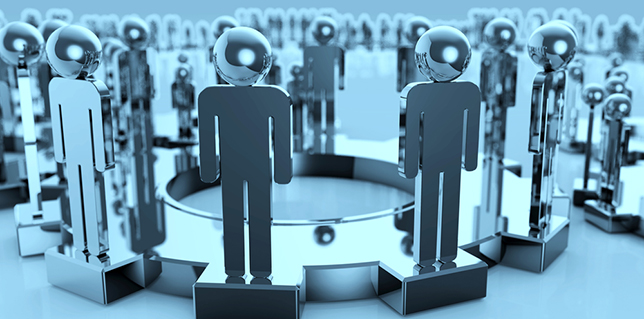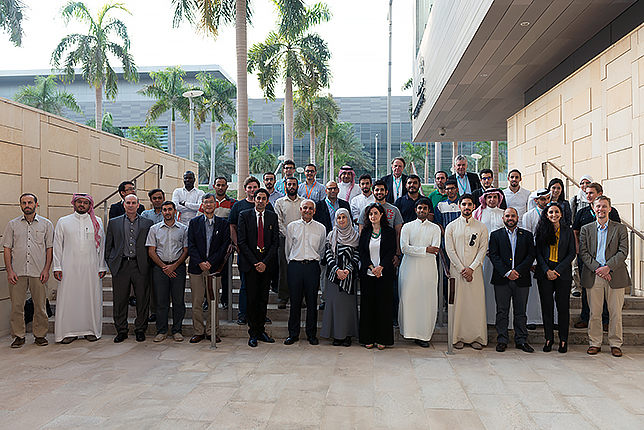Intelligent networks and the human element

KAUST Professor of Electrical Engineering Jeff Shamma co-organized the recent Human-Machine Networks and Intelligent Infrastructures conference.
Modern technology has offered cities and societies in general structured systems such as power grids, the Internet, mobile networks and various other engineered infrastructures. As the trend moves towards the development of smart cities, a growing number of sensors are available to capture all types of data from these interactive systems in order to maximize the efficiency of network interactions. However, we are still far from a reality where the world is ruled by intelligent machines. The human element remains a crucial factor in the overall equation.
KAUST recently hosted a conference entitled “Human-Machine Networks and Intelligent Infrastructures” which was aimed at examining these complex and interconnected systems. Co-sponsored by KAUST’s Office of Sponsored Research (OSR) and the KAUST Industry Collaboration Program (KICP), the conference was organized jointly by Professor Jeff S. Shamma from Electrical Engineering and Assistant Professor Meriem Laleg from Applied Mathematics and Computational Science. The symposium attracted a prestigious group of local and international speakers from institutions such as Harvard, Saudi Aramco, Georgia Tech and MIT.

The large systems, or multi-component systems, represent a combination or a blend of engineered devices and humans.
A smart grid
In a smart grid, appliances decide how much energy to use and when to use it. An individual may decide to install a smart meter in his or her house in order to be part of the smart grid.
“However, that individual has to agree to have a smart meter in the first place, so while the engineering technology is the meter, the human still needs to be have the incentive to agree to have that technology in his or her house," Shamma explained.
This is essentially what motivated the conference on the topic of large-scale systems and their many components interacting with each other. “There’s not necessarily a single overseer of the whole system dictating the actions of the components. Some of those components are human users,” Shamma added. The large systems, multi-component systems, represent a combination, or a blend, of engineered devices and humans.
A popular term currently used is the field is “cyber-physical systems,” but it is gradually giving way to “cyber-physical-social systems." Dr. Pramod Khargonekar, assistant director for Directorate of Engineering at the U.S. National Science Foundation (NSF), gave a keynote address on the topic of these cyber-physical-social systems and addressed major challenges, emerging trends and opportunities.

KAUST and international participants at the recent Human-Machine Networks and Intelligent Infrastructures conference held at the University.
Is the Internet really an intelligent infrastructure?
Professor Constantine Dovrolis from the Georgia Institute of Technology, a speaker at the conference, examined the network interactions that regulate the world of the Internet. His main premise was that most of the problems relating to Internet networks are attributable to humans. He cited some of the major players such as Comcast, Sprint or Cogent, who administer the main autonomous systems, or nodes, within of the Internet’s overall infrastructure that we all use.
The negotiations, contracts and administrative discussions between these service providers regarding the interconnections between users of these independent systems are entirely done by humans. Connectivity problems between these nodes are not necessarily attributable to routers executing native protocols, but rather often because of disagreements between service providers. Dovrolis presented charts demonstrating how often end-users of respective networks were unable to access peer platforms due to disputes between competing providers.
It’s a combination of competition and collaboration. There’s the end-user, but there’s also the people who created those autonomous systems. They have a vested interest for their system to work with other competitors, but market share considerations often come in between.
Influencing the actions of a few for the collective good
Because the human factor has such an impact on the cyber-physical infrastructures, it’s important to find ways of understanding and even predicting human action in the overall equation. Dr. Anas Alfaris, another speaker representing King Abdulaziz City for Science and Technology (KACST) and MIT, gave a talk at the conference entitled “City dynamics: A big data analytics platform for cities.” He shared the results of a study conducted in the city of Riyadh to shed light on the causes of congestion in the road network using mobile phone usage patterns.
Human decision-making is a major pillar of cyber-physical-social systems. “We need to figure out some balance between what is personally desirable and what is mutually desirable,” said Shamma.
If it were possible to influence a fraction of commuters to alter their behavior and allow the rest to decide with their natural dynamics, how much of a fraction would city administrators need to shift to positively alter overall commuting patterns? In a study by Walid Krichene from the University of California, Berkeley, another speaker at the event, researchers observed how simulations and analysis demonstrated that not many people are needed to shift the tide to a desirable commuting pattern.
The collection of such data helps government bodies plan for the construction of bus or metro systems in response to, not only today’s traffic patterns, but also in anticipation of traffic trends five to ten years from now.
“The intent is to use this data to build models of how things evolve so that the resources that are put in place today will still be effective years from now,” said Shamma.
Related Links
-By Meres J. Weche, KAUST News.

